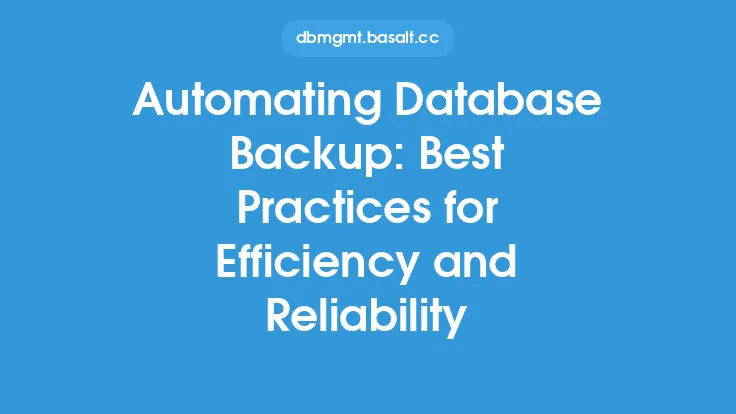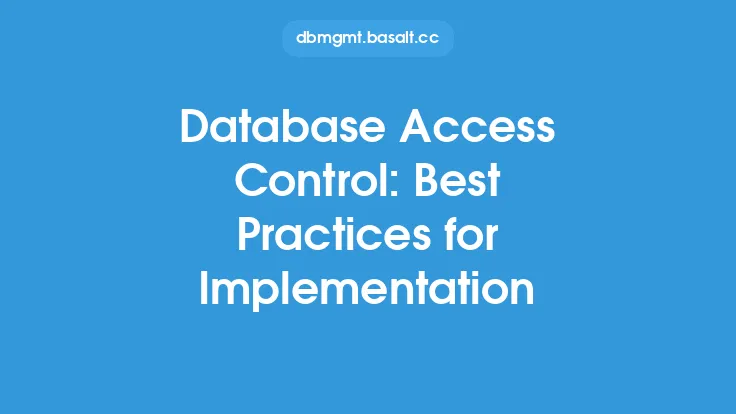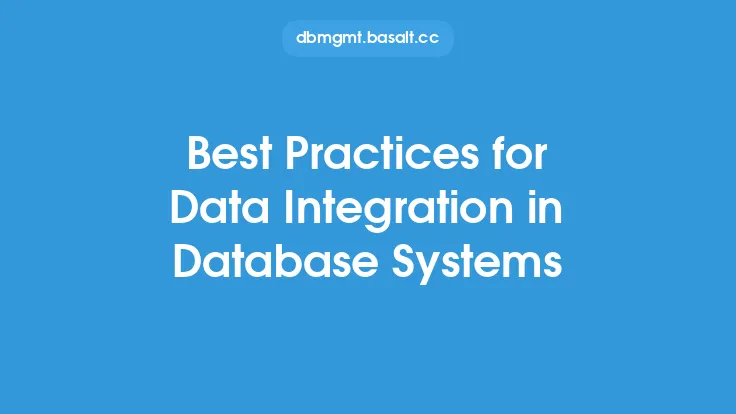Database testing and quality control are crucial aspects of database administration, ensuring that databases are reliable, efficient, and meet the required standards. A well-designed database testing strategy helps identify and fix errors, inconsistencies, and performance issues, ultimately leading to improved data quality and reduced downtime. In this article, we will delve into the best practices for database testing and quality control, providing a comprehensive guide for database administrators, developers, and quality assurance teams.
Introduction to Database Testing
Database testing involves evaluating the database's functionality, performance, and security to ensure it meets the specified requirements. It encompasses various testing techniques, including unit testing, integration testing, system testing, and acceptance testing. The primary goal of database testing is to identify defects, errors, and inconsistencies in the database design, data, and applications that interact with it. Effective database testing helps prevent data corruption, ensures data integrity, and optimizes database performance.
Types of Database Testing
There are several types of database testing, each focusing on specific aspects of the database. These include:
- Functional testing: Verifies that the database functions as expected, including data retrieval, insertion, update, and deletion.
- Performance testing: Evaluates the database's performance under various loads, including stress testing, load testing, and benchmarking.
- Security testing: Identifies vulnerabilities and weaknesses in the database's security, including authentication, authorization, and data encryption.
- Data integrity testing: Verifies that the data in the database is accurate, complete, and consistent, including testing for data corruption and inconsistencies.
- Compatibility testing: Ensures that the database is compatible with different operating systems, hardware configurations, and software applications.
Best Practices for Database Testing
To ensure effective database testing, follow these best practices:
- Develop a comprehensive testing strategy: Create a detailed testing plan that covers all aspects of the database, including functionality, performance, security, and data integrity.
- Use automated testing tools: Leverage automated testing tools to streamline the testing process, reduce manual effort, and increase test coverage.
- Test with realistic data: Use realistic data sets to simulate real-world scenarios, ensuring that the testing is relevant and effective.
- Test for edge cases: Identify and test edge cases, including boundary values, error conditions, and unexpected user input.
- Continuously monitor and test: Continuously monitor the database's performance and test for issues, ensuring that the database remains stable and efficient.
Quality Control Measures
Quality control is an essential aspect of database administration, ensuring that the database meets the required standards and is free from defects. The following quality control measures can be implemented:
- Data validation: Validate data at the point of entry, ensuring that it is accurate, complete, and consistent.
- Data normalization: Normalize data to minimize data redundancy and improve data integrity.
- Indexing and partitioning: Implement indexing and partitioning to improve query performance and reduce data fragmentation.
- Backup and recovery: Develop a robust backup and recovery strategy, ensuring that data can be restored in case of a failure or disaster.
- Change management: Implement a change management process, ensuring that all changes to the database are properly documented, tested, and approved.
Database Testing Tools and Techniques
Various database testing tools and techniques are available, including:
- Database testing frameworks: Such as DBUnit, TestNG, and JUnit, which provide a structured approach to database testing.
- Automated testing tools: Such as Selenium, Appium, and TestComplete, which automate the testing process and reduce manual effort.
- Database performance monitoring tools: Such as Oracle Enterprise Manager, SQL Server Management Studio, and MySQL Workbench, which monitor database performance and identify bottlenecks.
- Data profiling tools: Such as Talend, Informatica, and Trifacta, which analyze data quality and identify data inconsistencies.
Challenges and Limitations
Database testing and quality control pose several challenges and limitations, including:
- Complexity: Databases can be complex, making it challenging to develop a comprehensive testing strategy.
- Data volume and variety: Large volumes of data and diverse data types can make testing and quality control challenging.
- Limited resources: Limited resources, including time, budget, and personnel, can constrain the testing and quality control efforts.
- Evolving requirements: Evolving requirements and changing business needs can make it challenging to maintain a stable and efficient database.
Conclusion
Database testing and quality control are critical aspects of database administration, ensuring that databases are reliable, efficient, and meet the required standards. By following best practices, using automated testing tools, and implementing quality control measures, database administrators and quality assurance teams can ensure that databases are thoroughly tested and meet the required standards. While challenges and limitations exist, a well-designed database testing strategy and quality control process can help overcome these challenges and ensure that databases remain stable, efficient, and secure.





